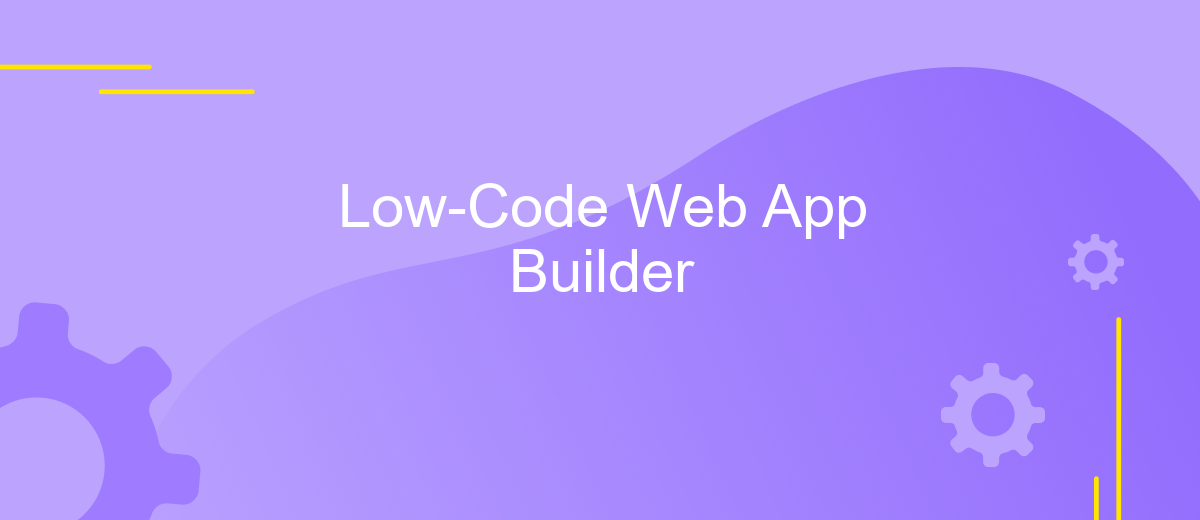Low-Code Web App Builder
In today's fast-paced digital world, the demand for rapid and efficient application development is at an all-time high. Low-code web app builders have emerged as a revolutionary solution, empowering businesses to create robust applications with minimal coding knowledge. By streamlining the development process, these platforms enable both technical and non-technical users to innovate and deploy web applications swiftly, reducing time-to-market and enhancing productivity.
Introduction to Low-Code Web App Builders
Low-code web app builders are transforming the landscape of application development by enabling users to create functional and dynamic web applications with minimal coding expertise. These platforms provide a user-friendly interface, often with drag-and-drop features, which simplifies the development process and reduces the time required to bring an application to market. As businesses strive to innovate rapidly, low-code solutions offer a viable alternative to traditional development methods.
- Reduced development time and cost
- Enhanced collaboration between IT and business teams
- Increased agility and scalability in app development
- Accessibility for non-technical users
- Integration with various data sources and services
The adoption of low-code web app builders is on the rise as organizations recognize their potential to streamline operations and foster innovation. By lowering the barrier to entry for application development, these platforms empower a broader range of individuals to participate in the digital transformation journey. As a result, businesses can respond more swiftly to market demands and technological advancements, maintaining a competitive edge in an ever-evolving landscape.
Benefits of Using a Low-Code Platform

Low-code platforms offer a transformative approach to web app development by significantly reducing the time and technical expertise required to create functional applications. One of the primary benefits is the ability to accelerate the development process through visual modeling and pre-built components, enabling teams to deliver solutions faster. This approach not only enhances productivity but also allows non-developers to participate in the app creation process, fostering innovation and collaboration across departments.
Furthermore, low-code platforms simplify the integration of various services and APIs, making it easier to connect disparate systems and streamline operations. For instance, tools like ApiX-Drive facilitate seamless integration between applications, allowing businesses to automate workflows and enhance functionality without extensive coding. This capability is crucial for organizations seeking agility and scalability in a rapidly changing technological landscape. Overall, adopting a low-code platform empowers businesses to respond swiftly to market demands, optimize resources, and focus on strategic growth initiatives.
Key Features to Look for in a Low-Code Web App Builder

When selecting a low-code web app builder, it's crucial to identify features that align with your development needs and goals. A well-equipped builder can significantly enhance productivity and streamline the development process, even for users with minimal coding experience.
- Drag-and-Drop Interface: Simplifies the design process, allowing users to visually construct their applications.
- Pre-built Templates: Offers a variety of customizable templates to accelerate app development.
- Integration Capabilities: Ensures seamless connectivity with existing systems and third-party services.
- Scalability: Supports the growth of your application as user demand increases.
- Security Features: Provides robust security measures to protect data and ensure compliance with industry standards.
Ultimately, a low-code web app builder should empower you to focus on innovation and functionality rather than getting bogged down by technical complexities. By prioritizing these key features, you can select a platform that not only meets your current needs but also adapts to future challenges and opportunities.
Choosing the Right Low-Code Platform for Your Needs

Choosing the right low-code platform is crucial for maximizing efficiency and meeting your specific business requirements. Begin by identifying your primary goals, whether it's rapid development, cost reduction, or increased collaboration. Understanding your objectives will guide your selection process.
Next, evaluate the platform's features and scalability. Ensure it offers essential tools like drag-and-drop interfaces, pre-built templates, and integration capabilities with existing systems. Scalability is vital for supporting future growth and adapting to evolving needs.
- Consider user-friendliness and accessibility for non-developers.
- Assess the platform's security measures and compliance with industry standards.
- Review customer support and community resources for troubleshooting and guidance.
- Analyze pricing models to ensure they align with your budget constraints.
Finally, test the platform with a pilot project to evaluate its performance and suitability. This hands-on experience will reveal any potential limitations and help you make an informed decision. By carefully considering these factors, you can select a low-code platform that effectively meets your organization's unique needs.


Building Your First Web App with a Low-Code Platform
Creating your first web app with a low-code platform is an exciting journey that begins with selecting the right tool that suits your needs. Low-code platforms provide intuitive drag-and-drop interfaces, allowing you to design your app's layout without deep programming knowledge. Start by defining the purpose of your app and sketching a basic design. These platforms often come with pre-built templates and components, which can significantly speed up the development process. Customize these elements to align with your brand and functionality requirements, ensuring a seamless user experience.
Once your app's structure is in place, it's time to integrate essential services. Platforms like ApiX-Drive can simplify this process by offering a wide range of integration options with various third-party services. Whether you need to connect your app to CRM systems, email marketing tools, or payment gateways, ApiX-Drive provides a user-friendly interface to automate these connections effortlessly. Testing is crucial; ensure your app functions as intended across different devices and scenarios. With everything set, publish your app and make it accessible to your target audience, ready to make an impact.
FAQ
What is a Low-Code Web App Builder?
How does a Low-Code platform benefit businesses?
Can I integrate third-party services with a Low-Code Web App Builder?
What types of applications can I build with a Low-Code Web App Builder?
Is a Low-Code Web App Builder suitable for large-scale applications?
Apix-Drive will help optimize business processes, save you from a lot of routine tasks and unnecessary costs for automation, attracting additional specialists. Try setting up a free test connection with ApiX-Drive and see for yourself. Now you have to think about where to invest the freed time and money!

